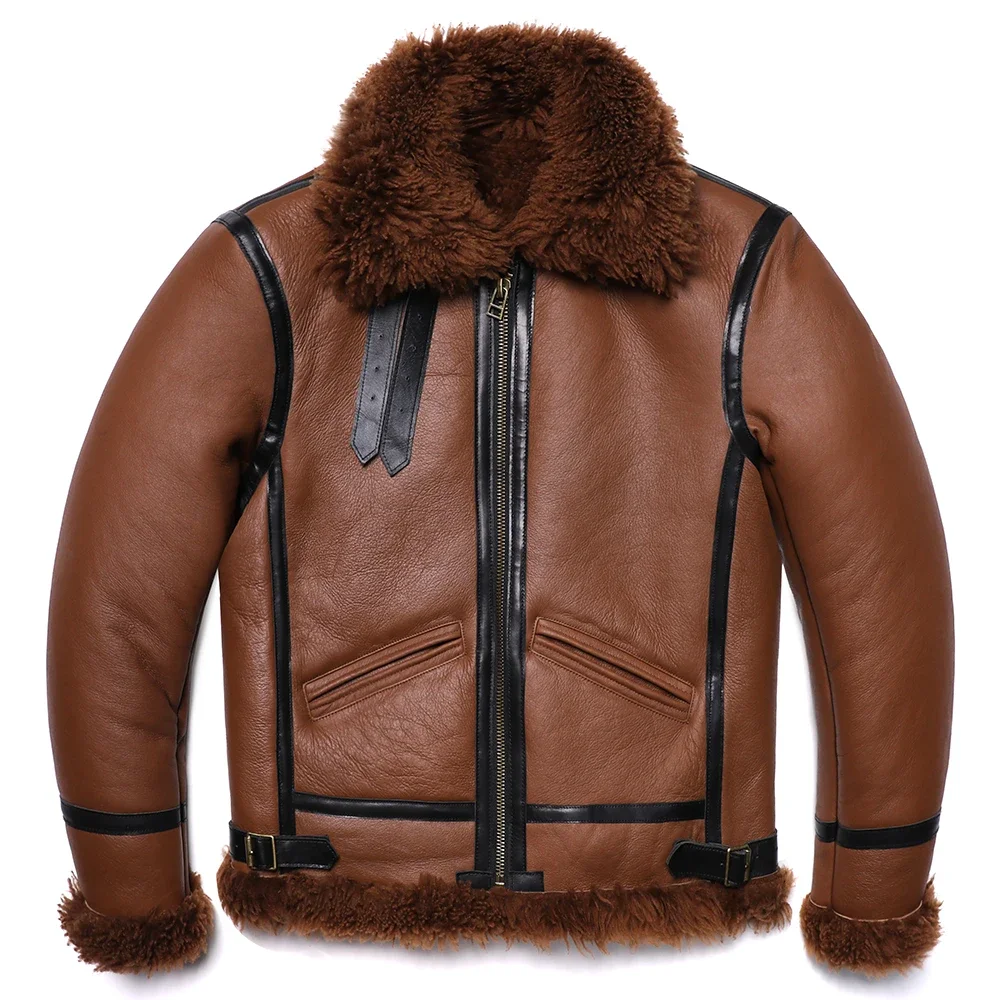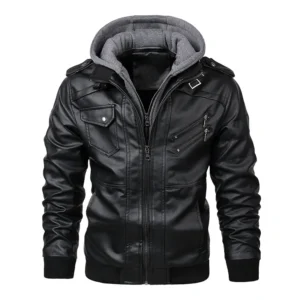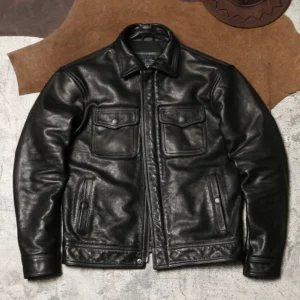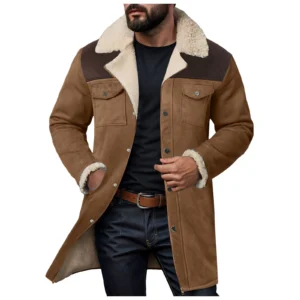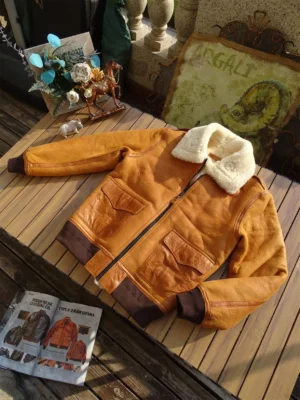Understanding Why Leather Coats Crack
Leather cracking appears as small lines or splits across the surface of your coat, often starting in areas that flex frequently like elbows and shoulders. These cracks can eventually grow deeper, compromising both the appearance and structural integrity of your prized leather garment.
At its core, leather is animal skin that naturally contains oils that keep it soft, flexible, and resilient. These essential oils provide the supple quality that makes leather such a luxurious material. However, unlike living skin that continuously replenishes its oils, tanned leather relies on proper maintenance to preserve its moisture.
When these natural oils evaporate over time, the molecular structure of leather begins to change. The protein fibers that give leather its strength become brittle and lose their ability to flex without breaking. This transformation happens gradually at the microscopic level, but the results become all too visible once cracks form.
Understanding the foundational information about leather properties and care is crucial before developing a maintenance routine. Different leather types react differently to environmental conditions:
- Full-grain leather (made from the top layer of hide) is most durable but requires consistent care
- Top-grain leather has some natural characteristics removed and a protective finish applied
- Corrected-grain leather has an artificial grain applied to hide imperfections
The difference between properly maintained and neglected leather is striking. Well-cared-for leather coats can last decades or even become family heirlooms, while neglected garments might show significant cracking within just a few years. Prevention is always easier than repair, as once leather cracks deeply, restoration becomes extremely difficult if not impossible.
Our variety of leather coat types all benefit from understanding these fundamental leather properties and developing proper maintenance habits.
Common Causes of Leather Cracks
Understanding what damages leather helps you take appropriate preventative action:
- Low humidity environments (below 40%) draw moisture from leather, accelerating drying
- Temperature fluctuations cause leather fibers to expand and contract, weakening their structure
- UV exposure breaks down leather proteins and fades color, making the surface brittle
- Direct heat sources like radiators, fireplaces, or car heaters cause rapid moisture loss
- Improper cleaning methods using alcohol-based products, ammonia, or bleach strip natural oils
- Poor storage practices like folding leather or using plastic covers that trap moisture
- Lack of regular conditioning fails to replace evaporated natural oils
Common household products that damage leather include rubbing alcohol, nail polish remover, household cleaners containing ammonia, and petroleum-based products. Even seemingly innocent items like hand sanitizer contain alcohol that can quickly dry out and damage leather surfaces.
Proper cleaning techniques to prevent damage are essential for maintaining your leather coat’s integrity. Being aware of these common causes helps you develop protective habits that extend your coat’s lifespan significantly.
Essential Prevention: Regular Conditioning Routine
Conditioning is the cornerstone of leather crack prevention. Think of it as moisturizer for your coat – it replaces the natural oils that evaporate over time, keeping the leather fibers flexible and resistant to cracking.
When leather dries out, its protein structure becomes brittle and prone to breaking when flexed. Quality conditioners penetrate the leather, surrounding these fibers with moisture and lubricants that restore elasticity. This process maintains the leather’s ability to move with you without developing stress fractures.
Selecting the right conditioner is crucial as different leather finishes have specific requirements. For most leather coats, cream or oil-based conditioners provide excellent results. Detailed conditioning guidance for different leather finishes can help you make the best choice for your specific garment.
Apply conditioner when your leather shows early signs of dryness – loss of natural luster, stiff texture, or a slightly rough feel. As a general rule, conditioning every 3-6 months provides sufficient protection, though coats worn frequently in harsh conditions may need more attention.
The conditioning process itself is straightforward but requires patience:
- Clean the coat thoroughly and allow it to dry completely
- Test conditioner on an inconspicuous area first
- Apply sparingly – too much conditioner can oversaturate leather
- Use gentle circular motions to work the product in
- Allow proper absorption time (usually 12-24 hours)
- Buff gently with a clean cloth to remove excess
Remember that leather conditioning is preventative maintenance – regular application before problems develop will keep your coat supple for years to come.
How to Select the Right Leather Conditioner
With numerous options available, choosing the right conditioner can seem overwhelming. Understanding the basic types helps narrow your selection:
Cream conditioners provide moderate moisture and are ideal for finished leather coats. They’re easy to apply, don’t usually darken the leather significantly, and offer good general protection.
Oil-based conditioners deliver deep moisturizing but can darken leather. They’re excellent for very dry or naturally oily leathers like pull-up or oil-tanned varieties. Guidance on oil-based conditioning products can help you apply these effectively.
Balms and waxes offer conditioning with additional water resistance. These are ideal for leather coats frequently exposed to moisture but may slightly alter the finish.
When selecting products, look for beneficial natural ingredients like:
* Lanolin (natural wool wax with excellent moisturizing properties)
* Beeswax (provides moisture and water resistance)
* Natural plant oils (jojoba, coconut, olive) that mimic leather’s natural oils
Avoid products containing petroleum distillates, silicone, or alcohol, which can dry out or damage leather over time. These ingredients might provide immediate shine but can harm leather with repeated use.
Proper Conditioning Technique
Following the right technique ensures maximum benefit from your conditioning efforts:
Preparation: Clean your coat thoroughly and allow it to dry completely. Conditioning dirty leather can trap particles inside, causing damage.
Test first: Apply a small amount of conditioner to an inconspicuous area (inside collar or inner seam) and wait 24 hours to check for darkening or adverse reactions.
Choose your tool: Clean microfiber cloths work well, though some prefer soft sponge applicators. Some experts recommend bare hands for even application, but wear gloves if using oil-based products.
Apply sparingly: Start with a small amount – you can always add more. Excess conditioner can oversaturate leather and attract dirt.
Use circular motions: Work the conditioner in using small, overlapping circles. This helps the product penetrate evenly without leaving streaks.
Focus on stress points: Pay special attention to areas that bend frequently – elbows, shoulders, and seams.
Allow absorption time: Let the conditioner penetrate for at least 12-24 hours. Rushing this step prevents deep moisturizing.
Buff gently: Remove any excess product with a clean cloth using light circular motions.
Sheepskin coats require special care during conditioning, as the wool lining must be protected from excess product that could mat the fibers or affect their insulating properties.
Protective Measures Against Environmental Damage
Environmental factors pose significant threats to leather integrity, but several protective measures can minimize these risks:
Leather protectant sprays create an invisible barrier against moisture and stains without affecting breathability. Apply these after conditioning (never before) in a well-ventilated area, holding the can 6-8 inches away from the surface. Allow the coat to dry fully before wearing. Reapply every 4-6 weeks during regular wear or before extended storage.
Humidity control is essential since leather thrives in moderate humidity (40-60%). In dry environments, consider using a humidifier in your closet area or placing a small container of water nearby (not touching the garment). For excessively humid environments, a dehumidifier or moisture-absorbing products help prevent mold and mildew.
Temperature management prevents structural stress on leather fibers. Ideal storage temperature ranges between 65-75°F (18-24°C). Avoid storing leather coats in attics, garages, or basements where temperatures fluctuate dramatically.
UV protection is crucial as sunlight damages leather quickly. Store coats away from direct sunlight and avoid prolonged sun exposure while wearing. If your coat is regularly exposed to sunlight (like in a car), consider specialized UV protectant products.
For unexpected exposure to rain or spills, blot (don’t rub) moisture gently with an absorbent cloth, then allow natural air drying away from direct heat. Specialized protection against moisture damage can provide additional security for coats frequently worn in challenging conditions.
Proper Storage to Prevent Cracks
How you store your leather coat when not in use dramatically affects its longevity. Proper storage prevents avoidable damage and preserves the garment’s shape and suppleness.
Ideal storage location should be cool, moderately humid, and away from direct light. A closet on an interior wall (avoiding exterior walls that may experience temperature fluctuations) provides stable conditions.
Proper hanging is essential – use wide, padded hangers that distribute weight evenly across the shoulders. Avoid wire or thin plastic hangers that can create pressure points and distort the leather’s shape.
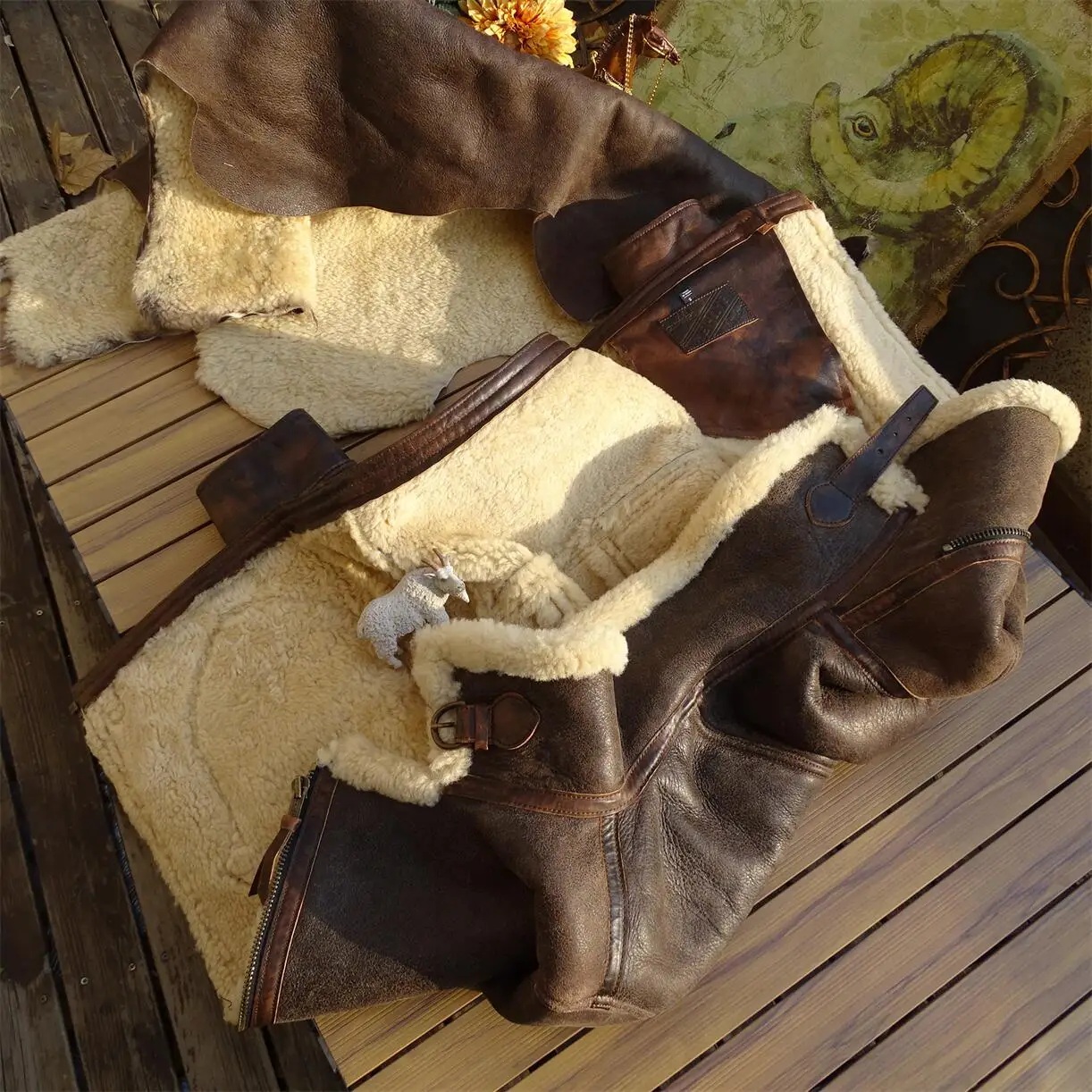
Use breathable covers like cotton garment bags that protect from dust while allowing air circulation. Never store leather coats in plastic bags or covers, which trap moisture and can lead to mildew or drying.
Avoid folds and creases as they can become permanent damage points. Hang coats with enough space between garments to maintain their shape and prevent crushing.
Seasonal preparation before long-term storage should include:
* Complete cleaning and conditioning
* Checking all pockets are empty
* Ensuring the coat is completely dry
* Applying leather protectant spray
Detailed storage methods for maintaining leather quality are particularly important during off-seasons when your coat won’t be regularly worn and conditioned through use.
Cleaning Techniques That Preserve Leather Flexibility
Regular cleaning removes contaminants that can accelerate deterioration while preparing the leather to accept conditioners properly. The key is using methods that clean effectively without stripping essential oils.
For routine maintenance, dust with a soft dry cloth weekly. For more thorough cleaning every 2-3 months (or as needed):
Prepare a gentle cleaning solution: Mix a few drops of mild soap (like Castile soap or saddle soap) with distilled water until slightly sudsy.
Dampen a clean cloth: The cloth should be damp, not wet. Excess water can stain and damage leather.
Clean with gentle motions: Use small circular movements without applying pressure. Work in small sections.
Wipe away soap residue: Use a fresh damp cloth to remove any soap.
Allow natural drying: Let the coat air dry completely at room temperature, away from heat sources or direct sunlight.
Condition after cleaning: Always follow cleaning with conditioning once the leather is completely dry.
For specific stains, address them promptly using appropriate techniques. Different stains require different approaches – information on appropriate cleaning products for different leathers can help you choose the right solution without causing damage.
Never use household cleaners, solvents, or alcohol-based products on leather, as these can strip natural oils and cause immediate drying and potential cracking.
Early Signs of Leather Drying and How to Respond
Recognizing early warning signs allows you to intervene before permanent damage occurs. Watch for:
- Loss of luster: Healthy leather has a subtle, natural sheen. Dullness often indicates dryness.
- Stiff texture: Leather should feel supple and slightly soft. If it feels rigid or hardened, conditioning is overdue.
- Light surface lines: Fine lines that appear when the leather is flexed but disappear when released are early warning signs.
- Rough texture: Smooth leather developing a slightly rough feel indicates surface drying.
- Lighter color in flex points: Areas that bend frequently may show lightening before cracking.
From first signs to actual cracking typically spans 2-6 months, depending on conditions and leather quality. This window gives you ample opportunity to reverse early drying.
When you notice these indicators, respond promptly:
1. Clean the leather thoroughly
2. Apply a quality conditioner, possibly with a longer absorption time
3. Consider a second light conditioning application after 48 hours
4. Increase your regular conditioning schedule
Different leather coats requiring different maintenance approaches may show varying signs of dryness, so familiarity with your specific garment helps identify problems earlier.
Common Mistakes That Cause Leather Cracking
Avoiding these common errors can significantly extend your leather coat’s lifespan:
Drying wet leather with heat – When leather gets wet, allow it to dry slowly at room temperature. Hair dryers, radiators, or sunlight cause rapid drying that shrinks and cracks leather fibers.
Using alcohol-based products – Products like standard shoe polish, many cleaners, and even hand sanitizer contain alcohol that strips leather’s natural oils immediately.
Improper storage methods – Folding leather for long periods creates permanent creases that eventually crack. Similarly, plastic covers trap moisture that can lead to mold or mildew.
Ignoring early warning signs – Stiffness, dullness, or slight surface changes signal the need for conditioning before visible damage occurs.
Over-conditioning or under-conditioning – While conditioning is vital, too much product can saturate leather and attract dirt. Conversely, neglecting regular conditioning leads to dryness and cracking.
Using household products as DIY fixes – Cooking oils, petroleum jelly, and furniture polish might seem like good substitutes but can cause discoloration, rancidity, or damage to stitching.
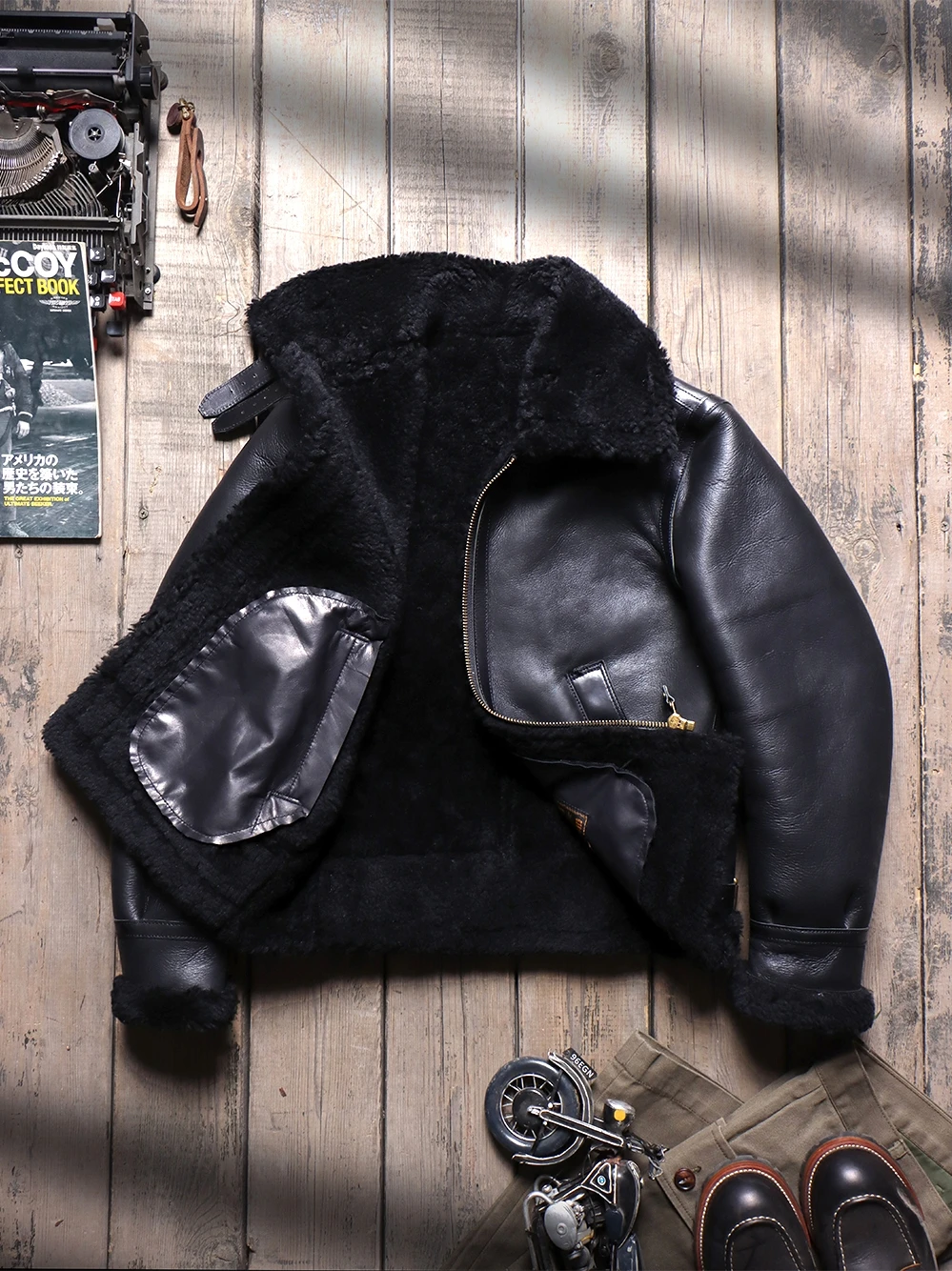
- Exposing leather to prolonged sunlight – UV rays break down leather’s structure, causing drying and fading. Even indoor storage near windows can cause gradual damage.
Understanding comprehensive protection strategies for leather garments helps avoid these common pitfalls and ensures your leather coat remains beautiful and functional.
Supplemental Content: Addressing Specific Leather Coat Scenarios
Can I wear my leather coat in light rain?
Brief exposure to light rain is generally acceptable for most treated leather coats. Blot (don’t rub) any moisture as soon as possible, then allow the coat to dry naturally at room temperature. Apply conditioner after it’s completely dry to restore any lost oils. However, repeated exposure to rain without proper aftercare will eventually damage the leather.
What’s the difference between caring for matte vs. glossy leather finishes?
Matte leathers (like nubuck or suede) have raised fibers that create their distinctive texture and require specialized cleaners and conditioners that won’t flatten these fibers. Glossy leathers have sealed surfaces that repel water better but can show scratches more prominently. They benefit from cream-based conditioners that maintain their shine without creating excess gloss.
How do different leather types require different care routines?
Full-grain leather needs regular conditioning but can handle more robust products. Top-grain leather, with its thinner profile, requires gentler care with lighter conditioners. Exotic leathers (like alligator) need specialized products designed for their unique characteristics. Specialized care requirements for shearling coats differ significantly, as both the leather and wool components must be maintained.
What exactly happens when leather gets too dry?
When leather loses its essential moisture, the protein fibers become brittle. Initially, this causes the surface to feel stiff and appear dull. As dryness progresses, these fibers lose flexibility and begin breaking under stress, creating visible cracks. Once these cracks form, the damage extends deeper into the leather’s structure, eventually compromising both appearance and durability.
Mens Leather Coat, Mens Long Leather Coat
Price range: $225.22 through $235.58 Select options This product has multiple variants. The options may be chosen on the product pageMens Black Leather Coat, Mens Leather Coat
Price range: $181.52 through $197.20 Select options This product has multiple variants. The options may be chosen on the product pageMens Brown Leather Coat, Mens Leather Coat
$846.94 Select options This product has multiple variants. The options may be chosen on the product pageMens Shearling Coat, Mens Sheepskin Coat
$888.08 Select options This product has multiple variants. The options may be chosen on the product page- Price range: $96.28 through $130.88 Select options This product has multiple variants. The options may be chosen on the product page
Mens Shearling Coat, Mens Sheepskin Coat
$2,257.19 Select options This product has multiple variants. The options may be chosen on the product page
Creating a Seasonal Leather Coat Maintenance Calendar
Organizing leather care by season ensures your coat receives appropriate attention throughout the year:
Spring Preparation (March-May)
* Deep clean to remove winter contaminants like salt residue
* Apply thorough conditioning treatment
* Use leather protectant spray before storage
* Store in breathable garment bag with proper hanger
Summer Off-Season Care (June-August)
* Check storage conditions monthly, especially for humidity issues
* Air out coat for several hours every 4-6 weeks
* Keep storage area temperature consistent (avoid hot attics or garages)
* Consider light conditioning mid-summer if storage area is particularly dry
Fall Reintroduction (September-November)
* Inspect for any issues developed during storage
* Clean and condition before regular wear
* Apply water and stain protectant if needed
* Check all hardware, zippers, and buttons
Winter Active Use (December-February)
* Wipe down after each wear, especially if exposed to snow or salt
* Allow complete drying before wearing again
* Spot clean as needed for salt marks or water spots
* Monthly light conditioning during heavy-use periods
Developing a personalized seasonal maintenance strategy for leather longevity helps integrate these practices into regular habits, ensuring your leather coat receives consistent care.
Professional Care: When to Seek Expert Help
While regular home maintenance prevents most problems, certain situations warrant professional attention:
- Deep cracks that have already formed
- Significant color fading or uneven coloration
- Water damage that has left stains or hardened areas
- Torn seams or structural damage
- Mold or mildew problems
- Vintage or especially valuable coats needing restoration
Professional leather specialists offer services including:
* Deep conditioning treatments with specialized equipment
* Color restoration and refinishing
* Crack repair (though complete reversal is rarely possible)
* Protective treatments with commercial-grade products
When selecting a leather care professional, ask about:
* Experience with your specific type of leather
* Examples of previous restoration work
* Products used and their ingredients
* Guarantees or warranties on their work
For most owners, the ideal approach combines regular home maintenance with occasional professional treatment. Establishing a relationship with a trusted leather care specialist gives you a resource for addressing serious issues while maintaining specialized care for black leather jackets and other specific garment types.
With proper care, your quality leather coat from Metro Cloak will remain supple, beautiful, and crack-free for years to come, developing the sought-after patina that makes well-maintained leather increasingly distinguished with age.

